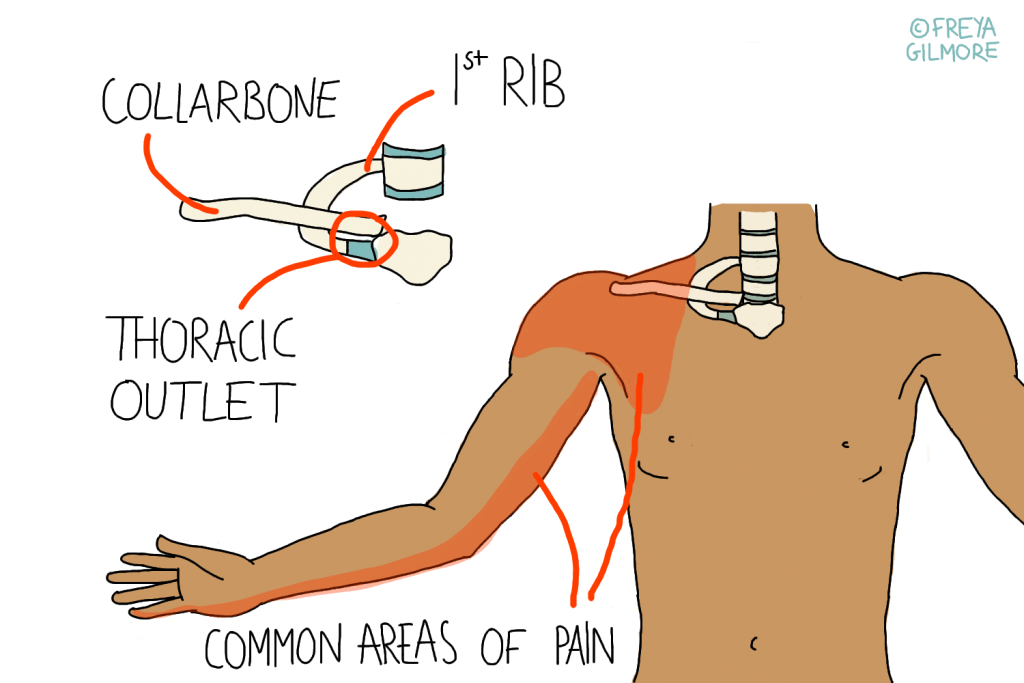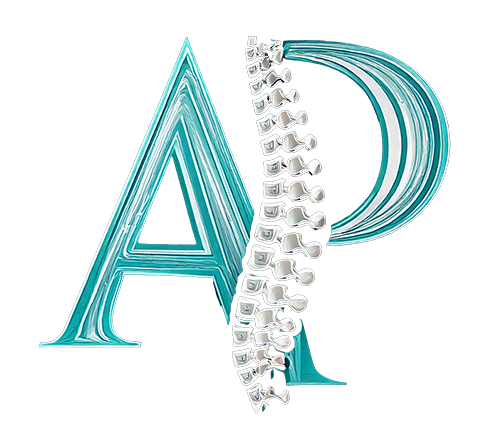Thoracic Outlet Syndrome
The thoracic outlet is the area between the arm and ribs where nerves and blood vessels leave the thorax (rib cage). There is not a lot of space here, so sometimes those nerves and vessels can be compressed. This causes symptoms into the arm, and is known as Thoracic Outlet Syndrome (TOS).

The Thoracic Outlet
There are a few small spaces in the outlet where nerves and vessels pass through. They become even smaller in certain movements, such as taking your arm out to the side or rotating out. As a result, people who do these movements in daily life may be more prone to developing TOS. They may also notice that their symptoms are worse when moving through these positions.
However, the two most common causes of TOS are traumatic or anatomical. It may be the case that you were already predisposed to TOS because of your anatomy, but it took an injury on top of that to initiate it.
Symptoms of TOS
With both kinds of TOS, symptoms affect the arm. Symptoms may be mild a lot of the time with an increase during activity. There may also be a pattern associated with things like desk work. Tight pectoral muscles can play a role in TOS, and modern life encourages this tightness.
Neurological TOS
The symptoms of TOS caused by nerve compression are similar to those of compressed nerves elsewhere. They can include:
- Weakness
- Wasting of hand muscles
- Numbness
- Pins and needles
When a nerve is repeatedly irritated, it can become hyper sensitive. This means that longer-standing problems typically take longer to resolve.
Vascular TOS
If a blood vessel is compressed, this is more urgent. This form of TOS is usually related to a cervical rib: where the lowest vertebra in the neck has ribs. This in itself is not too rare or significant, but when it compresses a blood vessel it can have major complications. Treatment may be surgical to remove or reduce the side of the rib.
There are tests we can use to determine whether your TOS is caused by a trapped nerve or vessel. It may also be evident which type you have from the case history. Vascular TOS can cause:
- Arm swelling
- Pain in the arm or hand in a less defined area
- Changes to skin colour in the arm (looking more red or blue)
- Pain when using the affected arm
Managing Thoracic Outlet Syndrome
In cases where conservative treatment is appropriate, your osteopath will devise a plan for you. Treatment might involve relaxing of the muscles around the thoracic outlet. As mentioned above, modern life can easily lead to tight pectoral muscles. This is further exacerbated by weakness in the upper back, allowing shoulders to round further and compress the outlet more.
In response to this, your osteopath might give you exercises to do between sessions. A stretch for the chest and strengthening for the upper back complement each other well.
As with any presentation, your osteopath will also look further afield to identify other predisposing factors. Treatment to the neck, upper back, or around the shoulder blade could be appropriate depending on your case.
If these sound like your symptoms, you can make an appointment online.

